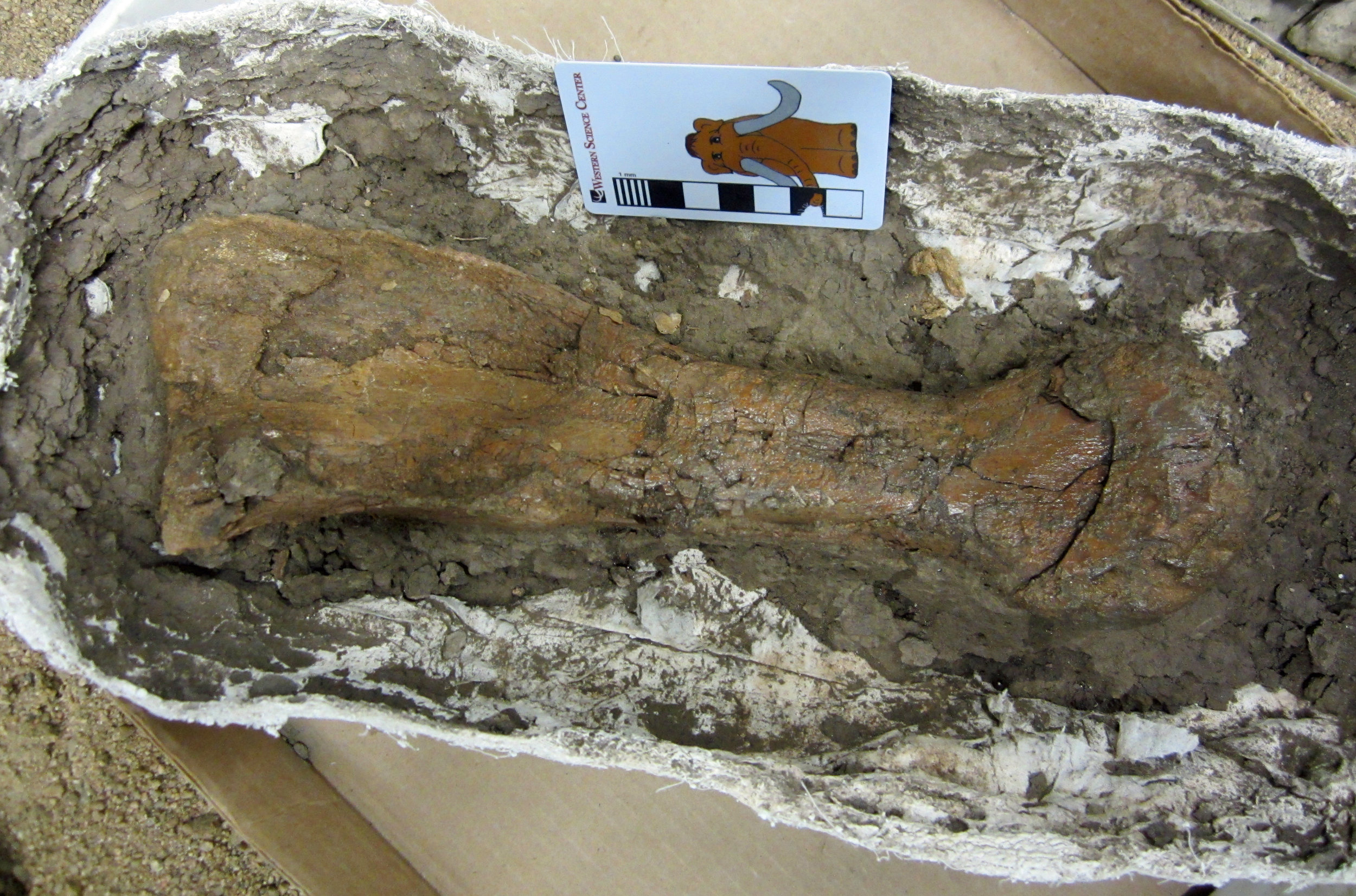 Discovering a dinosaur skeleton is a rare and special event.Most often, when out exploring in the badlands of New Mexico, we find isolated bones. However, even an isolated bone offers a wealth of information, about what kinds of animals were living in the area 79 million years ago, the depositional environment, and any unusual anatomical features or pathologies. Every summer, we collect numerous isolated bones of dinosaurs, crocodiles, and other animals from the Menefee Formation.Western Science Center prep lab volunteer John Deleon recently began preparing this dinosaur bone, which was collected by Southwest Paleontological Society volunteers Ben Mohler and Jake Kudlinski during our expedition last June. No other bones were found nearby, but this bone itself is well preserved and certainly worthy of the effort and study. It is a metatarsal, one of the large foot bones situated between the ankle and the toes, and probably belonged to a duck-billed plant-eating hadrosaur. Isolated hadrosaur bones, mostly limb bones and vertebrae, are the most commonly found dinosaur fossils in the Menefee Formation, suggesting that hadrosaurs probably were quite abundant in the ancient ecosystem. We'll be able to compare this bone to other limb bones we have collected over the years.Post by Curator Dr. Andrew McDonald.
Discovering a dinosaur skeleton is a rare and special event.Most often, when out exploring in the badlands of New Mexico, we find isolated bones. However, even an isolated bone offers a wealth of information, about what kinds of animals were living in the area 79 million years ago, the depositional environment, and any unusual anatomical features or pathologies. Every summer, we collect numerous isolated bones of dinosaurs, crocodiles, and other animals from the Menefee Formation.Western Science Center prep lab volunteer John Deleon recently began preparing this dinosaur bone, which was collected by Southwest Paleontological Society volunteers Ben Mohler and Jake Kudlinski during our expedition last June. No other bones were found nearby, but this bone itself is well preserved and certainly worthy of the effort and study. It is a metatarsal, one of the large foot bones situated between the ankle and the toes, and probably belonged to a duck-billed plant-eating hadrosaur. Isolated hadrosaur bones, mostly limb bones and vertebrae, are the most commonly found dinosaur fossils in the Menefee Formation, suggesting that hadrosaurs probably were quite abundant in the ancient ecosystem. We'll be able to compare this bone to other limb bones we have collected over the years.Post by Curator Dr. Andrew McDonald.
